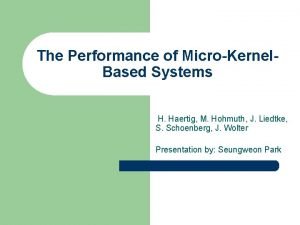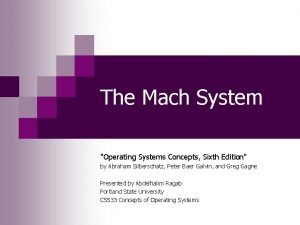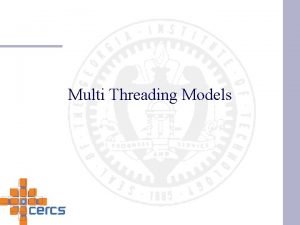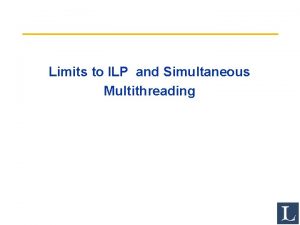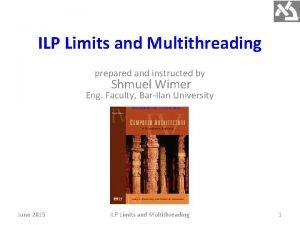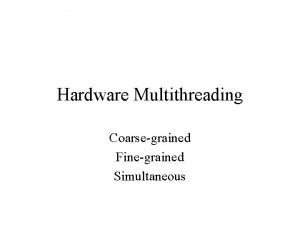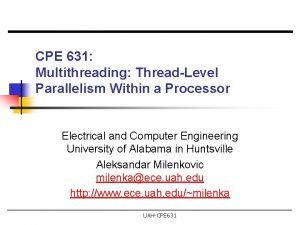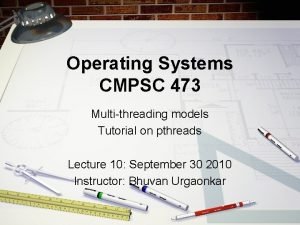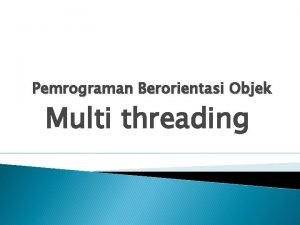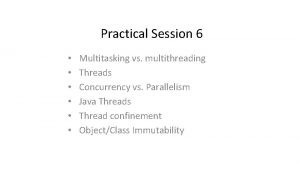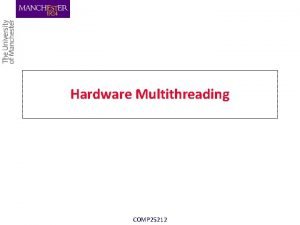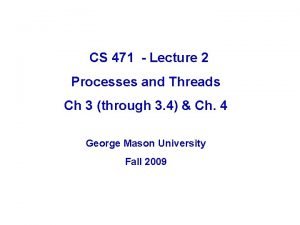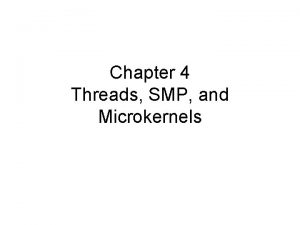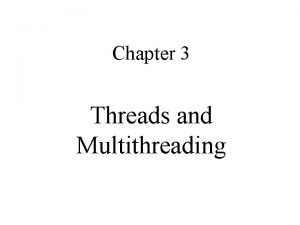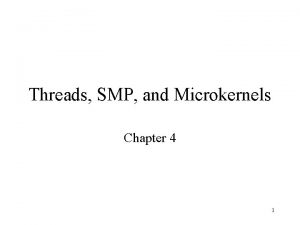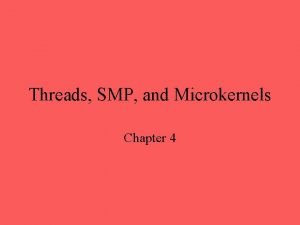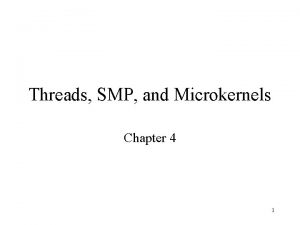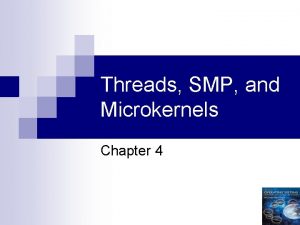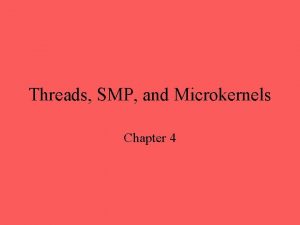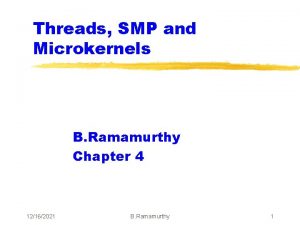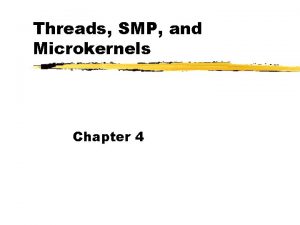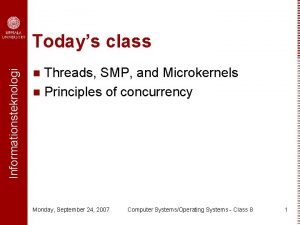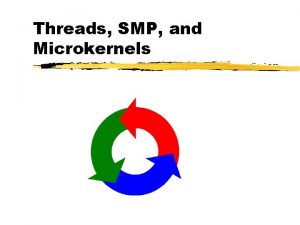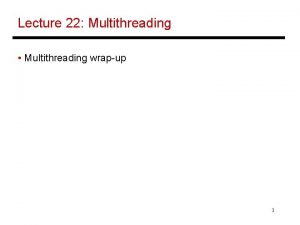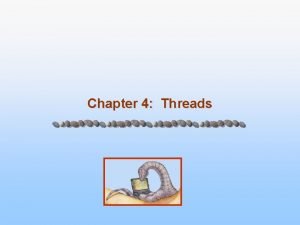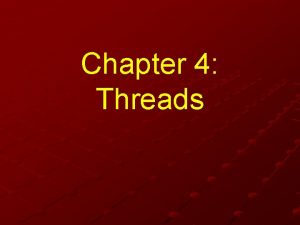Chapter 4 Threads SMP and Microkernels Multithreading The


















- Slides: 18

Chapter 4 Threads, SMP, and Microkernels

Multithreading • The ability of an OS to support multiple, concurrent paths of execution within a single process.

Single Thread Approaches • MS-DOS supports a single user process and a single thread. • Some UNIX, support multiple user processes but only support one thread per process

Multithreading • Java run-time environment is a single process with multiple threads • Multiple processes and threads are found in Windows, Solaris, and many modern versions of UNIX

One or More Threads in Process • Each thread has – An execution state (running, ready, etc. ) – Saved thread context when not running – An execution stack – Some per-thread static storage for local variables – Access to the memory and resources of its process (all threads of a process share this)

Multithreading In C & POSIX int j=0; void *my_thread(void *thr) { int i=0; for(i=0; i<100; i++, j++) printf("%d %d n", i, j); return NULL; } int main(int argc, char **argv) { int i=0; pthread_t thread 1, thread 2; pthread_create(&thread 1, NULL, my_thread, NULL); pthread_create(&thread 2, NULL, my_thread, NULL); for (i=0; i<100; i++, j++) printf("%d %dn", i, j); pthread_join(thread 1, NULL); pthread_join(thread 2, NULL); return 0; }

Benefits of Threads • Takes less time to create a new thread than a process • Less time to terminate a thread than a process • Switching between two threads takes less time that switching processes • Threads can communicate with each other – without invoking the kernel

Threads • • Foreground and background work Asynchronous processing Speed of execution Modular program structure • Suspending a process involves suspending all threads of the process • Termination of a process, terminates all threads within the process

Activities similar to Processes • Threads have execution states and may synchronize with one another. – Similar to processes

Multithreading on a Uniprocessor

Categories of Thread Implementation • User Level Thread (ULT) • Kernel level Thread (KLT) also called: – kernel-supported threads – lightweight processes.

User-Level Threads • All thread management is done by the application • The kernel is not aware of the existence of threads

Kernel-Level Threads • Kernel maintains context information for the process and the threads – No thread management done by application • Scheduling is done on a thread basis • Windows is an example of this approach

Combined Approaches • Thread creation done in the user space • Example is Solaris

Symmetric Multiprocessing

Symmetric Multiprocessing • Kernel can execute on any processor – Allowing portions of the kernel to execute in parallel • Typically each processor does selfscheduling from the pool of available process or threads

Symmetric Multiprocessing • How much a program will run faster if its 20% of its codes are parallelizable and we run it on 4 processor?

Windows SMP Support • Threads can run on any processor – But an application can restrict affinity • Soft Affinity – The dispatcher tries to assign a ready thread to the same processor it last ran on. – This helps reuse data still in that processor’s memory caches from the previous execution of the thread. • Hard Affinity – An application restricts threads to certain processor
 Microkernels
Microkernels Microkernels
Microkernels What is simultaneous multithreading
What is simultaneous multithreading Multithreading program in java
Multithreading program in java Multitasking vs multithreading
Multitasking vs multithreading Multithreading models
Multithreading models Fine grained multithreading
Fine grained multithreading Fine grained multithreading
Fine grained multithreading Fine grained multithreading
Fine grained multithreading Fine grained multithreading
Fine grained multithreading Fine grained multithreading
Fine grained multithreading Cmpsc 473
Cmpsc 473 Multithreading design patterns
Multithreading design patterns Multithreading adalah
Multithreading adalah Frunnable
Frunnable Multitasking vs multithreading in java
Multitasking vs multithreading in java What is hardware multithreading
What is hardware multithreading Process and threads
Process and threads Process and threads
Process and threads
